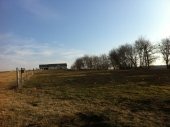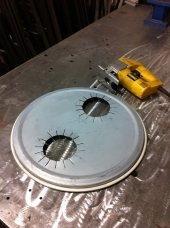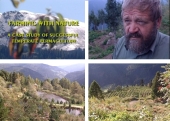






taking things to their illogical extreme, one conversation at a time...




Iterations are fine, we don't have to be perfect
My 2nd Location:Florida HardinessZone:10 AHS:10 GDD:8500 Rainfall:2in/mth winter, 8in/mth summer, Soil:Sand pH8 Flat




Idle dreamer






taking things to their illogical extreme, one conversation at a time...







Iterations are fine, we don't have to be perfect
My 2nd Location:Florida HardinessZone:10 AHS:10 GDD:8500 Rainfall:2in/mth winter, 8in/mth summer, Soil:Sand pH8 Flat





Ask me about food.
How Permies.com Works (lots of useful links)

 1
1




Julia Winter wrote:? What is the line that is not a contour line and runs roughly parallel to the creek?
taking things to their illogical extreme, one conversation at a time...











Ask me about food.
How Permies.com Works (lots of useful links)





S Bengi wrote:
I am going to assume that the stream runs year round and that it does not freeze in the winter.
If you where to pump the water up to the top and let it run back down to the stream
You would be able to create a system similar to sepp.
It seem like it would be a good idea to build terrance/swale/hugelkultur at each of the 10ft contour lines.
You could also make apart of the swale deeper and turn it into a pond, for 5 ponds.
S Bengi wrote:So if you start out with just the small deep swale "ponds" on contour,
Then you could "follow" the contour expand the pond at both ends as a shallow swale, as the years goes by.
You could build hugelkultur behind the swale on contour.
You would then be able to plant the food forest slowly on the swale/hugelkultur as you build it.
If the deep swale/pond is filled with unfrozen water in the winter, at 32F.
You might be able to grow citrus 3 citrus around each 5 pond so 15 citrus/fig/pomegranate/zone pushers .
S Bengi wrote:I would spend $30 a year on some new pest control semi-feral chicken. If they live/survive the winter or not who cares.
The pest control will eat the fallen fruits, thus no pest eggs. The will spread mulch, add manure, eat pest in mulch/etc.
If you are lucky you will get some eggs and meat, but thats not really a goal.
S Bengi wrote:So how to deal with the pond/swale overflow.
You could have the ponds flow down to the next one sepp style.
At the two ends of each contour wale you can have overflow that runs down. to the next contour swale.
Uhmm, thinking it now seems that the swales should pour their water into the "ponds" to be sent down hill.
S Bengi wrote:If each of the 5 contour lines is around 600ft,
You will end up doing 3,000ft of swale/hugelkultur at 8ft width.
How long do you see this taking you.
How wide do you plan on making the swale...4ft
How deep do you plan on making the swale...2ft
How wide do you plan on making the hugelkultur....4ft
How high do you plan on making the hugelkultur....3ft
How deep do you plan on making the hugelkultur...0.5f
How much of this do you see yourself doing per year...(money for machine), (time/strength by hand).
taking things to their illogical extreme, one conversation at a time...
 1
1






taking things to their illogical extreme, one conversation at a time...








Rufus Laggren wrote:Where does water for the ponds come from? It sounds from what you said the stream will not be the source, so... Is 30"/yr enough on just our property to keep standing surface water or are you part of a water shed that extends west and provides you significant runoff? You didn't mention where the water table was and clearly that matters to the ponds, also. If the farms to the west are/were tiled it says somebody wanted to sink the water table or dispose of significant surface water.








Iterations are fine, we don't have to be perfect
My 2nd Location:Florida HardinessZone:10 AHS:10 GDD:8500 Rainfall:2in/mth winter, 8in/mth summer, Soil:Sand pH8 Flat




 1
1









taking things to their illogical extreme, one conversation at a time...








we CAN build a better world

|
It's weird that we cook bacon and bake cookies. Eat this tiny ad:
Freaky Cheap Heat - 2 hour movie - HD streaming
https://permies.com/wiki/238453/Freaky-Cheap-Heat-hour-movie
|






